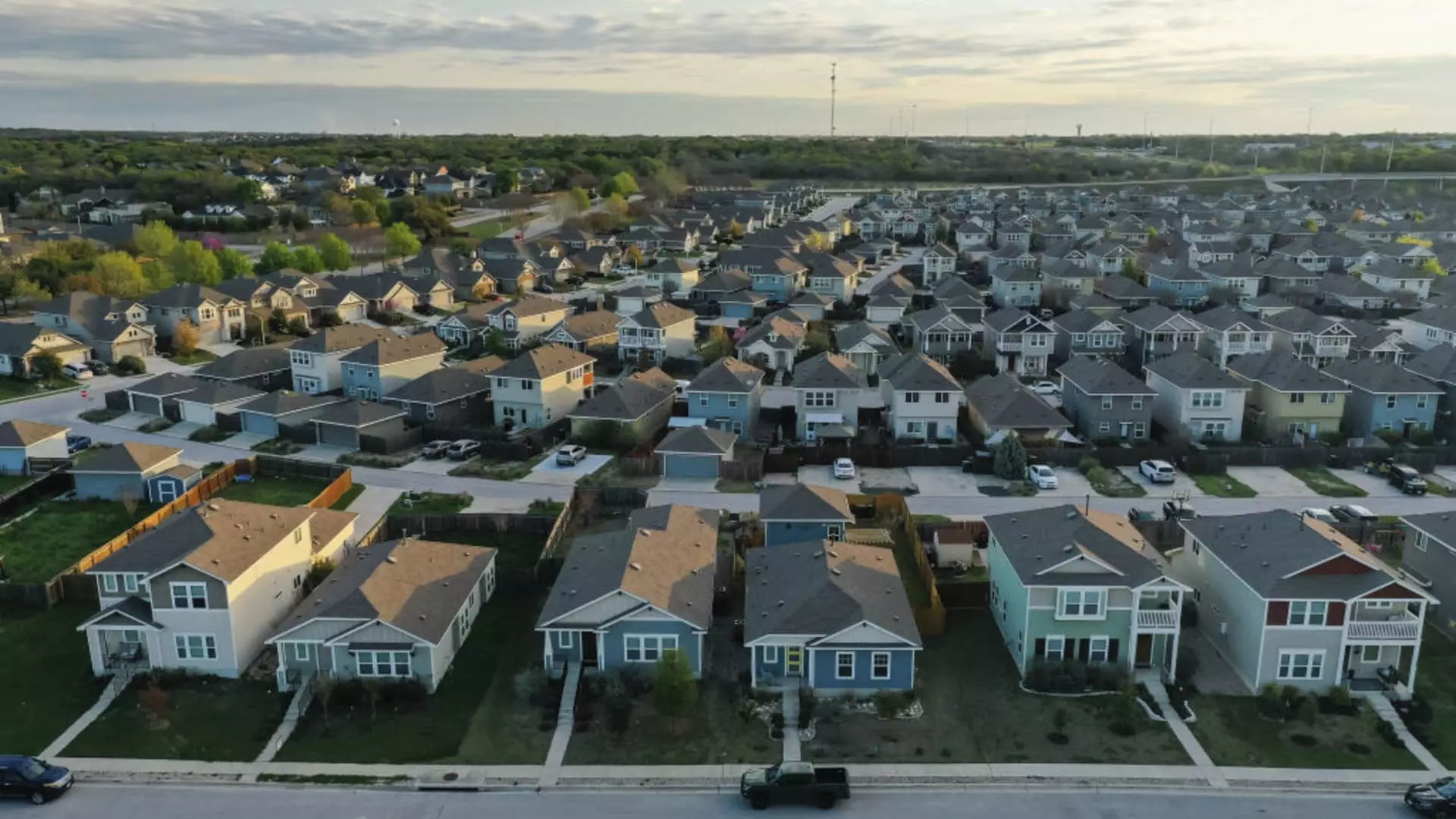As we navigate through the spring housing market, potential homebuyers find themselves caught in a complex web of rising prices and stagnant mortgage rates. Despite a rumored influx of listings, the anticipated surge in buyer activity has yet to materialize, leaving many questioning the health of the housing market overall. Recent data from the Mortgage Bankers Association highlights a troubling 4% drop in mortgage applications to purchase homes, signaling a lack of urgency among consumers eager to make their move. This flat demand contrasts sharply with the bustling pre-pandemic market, where momentum in sales was palpable.
Mortgage rates have remained relatively stable over the past few weeks, with the average interest rate for a 30-year fixed mortgage slightly decreasing to 6.97%. This development, while favorable, is part of a broader context where high rates still deter many would-be buyers. Furthermore, the increasing average loan size mirrors the trend of rising home prices, which reached an average of $447,300 for new mortgages—marking the highest point recorded in recent years. It appears that a significant number of consumers are currently priced out, unable to enter the market at these elevated levels, reflecting a shift in financial accessibility.
Interestingly, while purchasing activity has dwindled, there has been a notable uptick in refinancing applications—up 12% week-over-week. This increase, however, must be viewed through a critical lens. Although it seems promising, much of this spike relates to the historically low volume of refinancing options currently available. The majority of homeowners today have rates locked in significantly lower than what the current market provides, indicating that the overall volume may not truly reflect a recovery or healthy demand.
The worsening metrics extend beyond purchasing and refinancing; existing home sales are languishing at levels not seen in almost three decades. Despite a 25% rise in home supply compared to last year—indicative of longer selling periods—the market remains suppressed with many homes still fetching unchanged listing prices due to perceived competition. For sellers holding firm on their pricing, this has created a paradox where fewer homes are being sold despite a larger inventory. A significant factor contributing to this stagnation is the average time to sell a home, which has extended to 54 days, the longest wait since early 2020.
As we embark on this year’s housing season, the blend of stagnant mortgage rates, rising home prices, and fluctuating buyer confidence creates a challenging landscape for all involved. With potential homebuyers feeling the pinch of affordability and sellers grappling with the reality of a sluggish market, the spring housing market may not yield the revitalization many hoped for. Thus, buyers and sellers alike must adapt to an environment characterized by caution, patience, and strategic decision-making to navigate these turbulent times successfully.

